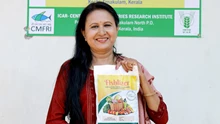
Global food security represents one of the most pressing challenges confronting the international community in the 21st century. With the world population projected to surpass 9 billion by 2050, coupled with the effects of climate change and diminishing fertile agricultural land, ensuring an adequate food supply has become increasingly complex. In response to these challenges, innovative solutions are being required to boost crop productivity without further depleting valuable land resources. Among these solutions, vertical farming has emerged as a promising approach to address the pressing issue of food security.
What is Vertical Farming?
Vertical farming, also known as indoor farming, involves cultivating plants indoors using LED lighting and controlled growing and nutrition systems instead of relying on sunlight and rain. This innovative approach involves stacking plants vertically in layers and uses advanced techniques such as hydroponics and aquaponics. This method optimizes land utilization, conserves water, and enables precise environmental control. Moreover, its suitability for urban settings reduces reliance on long-distance transportation, curbing carbon emissions.
Vertical farming is an adaptable solution to the complex problems associated with food security that could improve the global food system's resilience and sustainability.
How can Vertical Farming be a Climate-Resilient Solution for Agriculture?
Vertical farming optimizes resource utilization by growing crops in stacked layers, conserving space and reducing water usage through advanced hydroponic and aeroponic systems. Controlled environments minimize pesticide use, decreasing chemical runoff and environmental harm. When powered by renewable energy, vertical farms can achieve near self-sufficiency, further reducing their ecological footprint.
Vertical farming mitigates the impact of unpredictable weather associated with climate change by operating in controlled indoor conditions, ensuring consistent food production regardless of external factors. Its scalability allows for deployment in diverse environments, including urban and underground spaces traditionally unsuitable for agriculture.
Technological integration enhances vertical farming's capabilities, with real-time sensors and IoT devices monitoring conditions like humidity and nutrient levels. Automation lowers labor costs and environmental effects while big data analytics optimizes growth conditions and anticipates possible problems. These advancements make vertical farming efficient and increasingly accessible.
Furthermore, the vertical farming business model depends on the growing of plants in close proximity to the customers. Thus, emissions from farming equipment and land transportation are reduced by vertical farming.
Let's examine this in more detail
-
Optimizing Resource Use: Vertical farming optimizes resource utilization by stacking layers of plants vertically, often within controlled indoor environments. This method efficiently utilizes space and drastically reduces water consumption through advanced hydroponic and aeroponic systems. Moreover, the controlled environment minimizes the need for pesticides, leading to a more sustainable agricultural practice.
-
Climate Resilience: Traditional agriculture is vulnerable to unpredictable weather conditions exacerbated by climate change. In contrast, vertical farming operates in controlled indoor conditions, eliminating the impact of weather fluctuations on crop yields. This resilience makes vertical farming a dependable food source regardless of climatic conditions.
-
Water Conservation: Vertical farming significantly reduces water consumption compared to traditional agriculture. Hydroponic and aquaponic systems allow for closed-loop water circulation, minimizing wastage. Additionally, dehumidification systems collect and recycle water released through plant transpiration, further conserving freshwater resources.
-
Mitigating Fossil Fuel Emissions: Traditional agriculture relies heavily on fossil fuel-powered machinery for various tasks, contributing to greenhouse gas emissions. Vertical farming eliminates the need for such machinery, as well as the associated heating requirements in well-insulated indoor environments. Moreover, the use of renewable energy sources further reduces carbon emissions, making vertical farming an environmentally sustainable option.
-
Minimal Chemical Usage: The controlled environment of vertical farms reduces the risk of pest infestation and fungal diseases, eliminating the need for chemical pesticides. Additionally, without the requirement for long-distance transportation, there's no need for preservatives or chemicals to extend the shelf life of produce, ensuring safer and healthier food for consumers.
-
Localized Production: Vertical farms can be established close to urban centers, reducing the need for long-distance transportation of food. This not only cuts down on carbon emissions but also minimizes food waste by delivering fresher produce with extended shelf life. Furthermore, localized production enhances food security by ensuring a more reliable and resilient supply chain.
While vertical farming offers numerous benefits, energy consumption remains a significant challenge. LED grow lights, essential for indoor plant growth, require substantial energy inputs. However, advancements in LED technology have led to increased energy efficiency, making vertical farming more economically viable. Research into smart solutions, such as improved solar panel technology and utilizing excess heat for heating adjacent buildings, aims to further reduce energy consumption and enhance the sustainability of vertical farming.
Vertical farming presents a revolutionary solution to the complex issue of global food security. By optimizing resource use, minimizing environmental impact, and ensuring localized production, vertical farming holds immense potential to transform the way we produce food sustainably.










